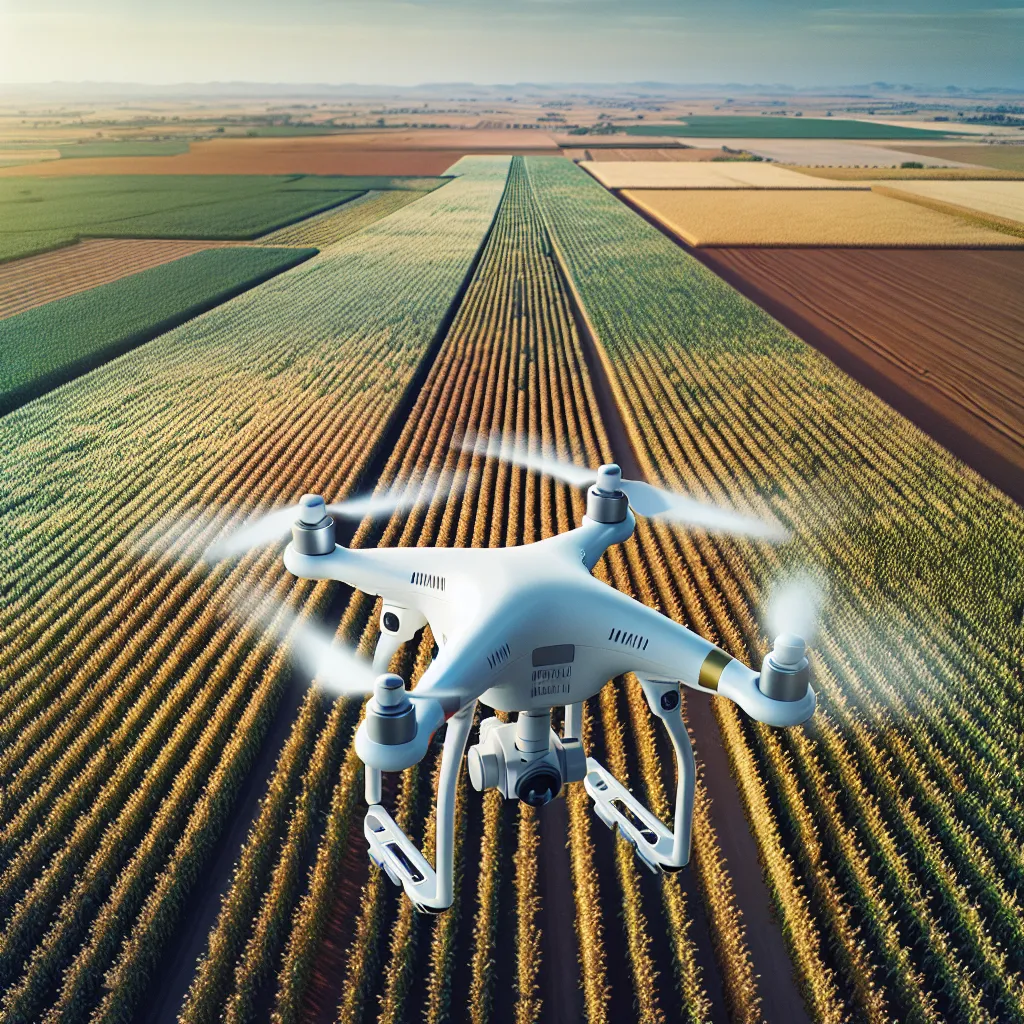 Precision Agriculture
Precision Agriculture
As an experienced IELTS instructor, I’m excited to share with you a comprehensive IELTS Reading practice test focused on the timely topic of “How Technology is Addressing Global Food Shortages.” This test will help you prepare for the actual IELTS exam while exploring an important global issue. Let’s dive in!
Introduction to the IELTS Reading Test
The IELTS Reading test consists of three passages of increasing difficulty, followed by a series of questions. This practice test mirrors the actual exam format, covering various aspects of how technology is being used to combat global food shortages. You’ll encounter different question types, including multiple choice, true/false/not given, matching information, and short answer questions. Let’s begin with Passage 1.
Passage 1 – Easy Text
The Green Revolution 2.0: Technology’s Role in Feeding the World
The world is facing an unprecedented challenge: how to feed a growing population in the face of climate change and resource scarcity. As we approach 2050, the global population is expected to reach 9.7 billion, putting immense pressure on our food systems. However, a new wave of technological innovations is emerging to address these challenges, ushering in what some are calling the “Green Revolution 2.0.”
The original Green Revolution of the mid-20th century dramatically increased crop yields through the use of improved seeds, fertilizers, and pesticides. While successful in many ways, it also had negative environmental impacts. Today’s technological solutions aim to increase food production while minimizing ecological damage.
One of the most promising areas is precision agriculture. This approach uses sensors, drones, and satellite imagery to collect data about soil conditions, weather patterns, and crop health. Farmers can then use this information to make more informed decisions about when to plant, irrigate, and harvest their crops. This targeted approach reduces waste and improves yields.
Vertical farming is another innovative solution gaining traction. By growing crops in stacked layers, often in urban environments, vertical farms can produce food year-round with minimal water usage and no pesticides. These systems use LED lighting and hydroponics or aeroponics to create optimal growing conditions, regardless of external weather.
Genetic engineering and CRISPR technology are also playing a crucial role in developing crops that are more resistant to pests, diseases, and extreme weather conditions. These techniques allow scientists to create plants that can thrive in challenging environments, potentially expanding the areas where food can be grown.
Artificial intelligence (AI) and machine learning are being applied to various aspects of agriculture, from predicting crop yields to optimizing supply chains. AI-powered systems can analyze vast amounts of data to provide insights that help farmers and food distributors make better decisions.
While these technologies offer great promise, it’s important to ensure they are accessible to farmers worldwide, including those in developing countries. Sustainable intensification – increasing crop yields without expanding land use or causing environmental harm – will be crucial for addressing global food shortages in the coming decades.
As we face the challenges of feeding a growing world population, technology will undoubtedly play a pivotal role. By embracing these innovations responsibly and equitably, we can work towards a future where food security is achievable for all.
Questions 1-5
Do the following statements agree with the information given in the passage? Write
TRUE if the statement agrees with the information
FALSE if the statement contradicts the information
NOT GIVEN if there is no information on this
- The global population is expected to reach 9.7 billion by 2050.
- The original Green Revolution had no negative environmental impacts.
- Vertical farming uses more water than traditional farming methods.
- CRISPR technology can create plants that are resistant to extreme weather conditions.
- All farmers worldwide have equal access to new agricultural technologies.
Questions 6-10
Complete the sentences below. Choose NO MORE THAN TWO WORDS from the passage for each answer.
- Precision agriculture uses various technologies to collect data about ____, weather patterns, and crop health.
- Vertical farms often use ____ or aeroponics to create optimal growing conditions.
- ____ and machine learning are being used to predict crop yields and optimize supply chains.
- Increasing crop yields without expanding land use or causing environmental harm is known as ____.
- The text suggests that embracing new technologies ____ and equitably is important for addressing global food shortages.
Passage 2 – Medium Text
Revolutionizing Food Production: The Impact of Emerging Technologies
As the global population continues to grow and climate change threatens traditional agricultural practices, the need for innovative solutions to food production has never been more urgent. Emerging technologies are playing a crucial role in addressing these challenges, offering new ways to increase crop yields, reduce waste, and create more sustainable food systems.
One of the most significant developments in recent years has been the rise of precision agriculture. This approach utilizes a range of technologies, including GPS-guided tractors, drone surveillance, and satellite imaging, to optimize farming practices. By providing detailed information about soil conditions, crop health, and weather patterns, precision agriculture allows farmers to make data-driven decisions about when to plant, irrigate, and harvest their crops. This targeted approach not only increases yields but also minimizes the use of water, fertilizers, and pesticides, reducing both costs and environmental impact.
Artificial intelligence (AI) and machine learning are increasingly being applied to various aspects of agriculture and food production. These technologies can analyze vast amounts of data to predict crop yields, detect plant diseases early, and optimize supply chains. For example, AI-powered image recognition systems can identify pests or signs of nutrient deficiency in crops much faster and more accurately than human observers. This early detection allows for timely interventions, potentially saving entire harvests.
The field of biotechnology is also making significant contributions to food security. Genetic engineering and CRISPR gene editing techniques are being used to develop crops that are more resistant to pests, diseases, and environmental stresses such as drought or salinity. These improved varieties can help ensure stable food production in challenging conditions, which is particularly important as climate change alters growing conditions in many parts of the world.
Another promising area is vertical farming, which involves growing crops in stacked layers, often in controlled indoor environments. This approach can produce food year-round, regardless of external weather conditions, and uses significantly less water than traditional farming methods. Vertical farms can be located in urban areas, reducing transportation costs and bringing fresh produce closer to consumers. While currently more expensive than conventional farming, ongoing technological advancements are making vertical farming increasingly viable as a complement to traditional agriculture.
3D food printing is an emerging technology that could revolutionize food production and consumption. This technique allows for the creation of customized food items with specific nutritional profiles, potentially addressing issues of malnutrition and food waste. While still in its early stages, 3D food printing could eventually enable the production of food from sustainable ingredients such as algae or insect protein, offering new solutions to global food shortages.
Blockchain technology is being applied to food supply chains to improve traceability and reduce waste. By creating a transparent and immutable record of a food product’s journey from farm to table, blockchain can help identify inefficiencies, reduce fraud, and improve food safety. This technology can also empower consumers by providing detailed information about the origin and production methods of their food.
As we look to the future, the integration of these technologies into our food systems holds great promise. However, it’s crucial to consider the potential challenges and ethical implications of these advancements. Issues such as data privacy, the digital divide between large and small-scale farmers, and the environmental impact of some technologies need to be carefully addressed.
Moreover, while technology can provide powerful tools, it’s important to recognize that addressing global food shortages will require a multifaceted approach. This includes improving infrastructure, reducing food waste, promoting sustainable diets, and ensuring equitable access to resources and markets. By combining technological innovation with sound policies and practices, we can work towards a future where food security is achievable for all.
Questions 11-14
Choose the correct letter, A, B, C, or D.
-
According to the passage, precision agriculture:
A) Solely relies on GPS-guided tractors
B) Increases crop yields but also increases water usage
C) Allows for data-driven farming decisions
D) Is only effective in developed countries -
The text suggests that AI and machine learning in agriculture can:
A) Completely replace human farmers
B) Only be used for predicting crop yields
C) Detect plant diseases faster than humans
D) Solve all agricultural problems -
Vertical farming, as described in the passage:
A) Uses more water than traditional farming
B) Can only be done in rural areas
C) Is currently less expensive than conventional farming
D) Allows for year-round food production -
The passage indicates that blockchain technology in food production:
A) Is primarily used for cryptocurrency transactions
B) Can improve traceability in food supply chains
C) Has no impact on food waste
D) Is fully implemented in all major food companies
Questions 15-20
Complete the summary below. Choose NO MORE THAN TWO WORDS from the passage for each answer.
Emerging technologies are playing a crucial role in addressing global food shortages. Precision agriculture uses various tools to optimize farming practices, while (15) ____ and machine learning help in predicting crop yields and detecting plant diseases. (16) ____ techniques like genetic engineering are developing more resilient crops. (17) ____ allows for year-round food production in urban areas, and (18) ____ could enable the creation of customized food items. (19) ____ is being used to improve traceability in food supply chains. However, addressing food shortages will require a multifaceted approach, including improving infrastructure and (20) ____ food waste.
Passage 3 – Hard Text
The Convergence of Nanotechnology and Biotechnology in Addressing Global Food Insecurity
The looming specter of global food insecurity, exacerbated by climate change, population growth, and resource depletion, has spurred unprecedented innovation at the intersection of nanotechnology and biotechnology. This convergence is giving rise to a new paradigm in agriculture and food production, one that promises to revolutionize our capacity to feed the world’s burgeoning population while minimizing environmental impact.
Nanotechnology, the manipulation of matter at the atomic and molecular scale, is providing novel tools for enhancing crop productivity and food quality. Nanomaterials, such as carbon nanotubes and metal oxide nanoparticles, are being incorporated into “smart” fertilizers that can release nutrients in response to environmental triggers or plant signals. This precise nutrient delivery system not only optimizes plant growth but also mitigates the environmental damage caused by excessive fertilizer runoff.
Furthermore, nanosensors are revolutionizing precision agriculture by enabling real-time monitoring of soil conditions, plant health, and environmental factors at an unprecedented level of detail. These miniature devices can detect minute changes in plant metabolism, signaling the onset of stress or disease before visible symptoms appear. This early warning system allows for targeted interventions, potentially averting crop failures and reducing the need for broad-spectrum pesticides.
The integration of nanotechnology with biotechnology is particularly evident in the development of nanocarriers for genetic material. These nanoparticles can deliver DNA or RNA directly into plant cells, facilitating more precise and efficient genetic modifications. This approach, known as nanoengineered gene delivery, holds promise for creating crops with enhanced nutritional profiles, improved stress tolerance, and increased yield potential.
Complementing these advancements, biotechnology continues to push the boundaries of crop improvement. CRISPR-Cas9 gene editing, a technique that allows for precise modifications to an organism’s DNA, is being employed to develop crops with traits such as drought resistance, salt tolerance, and enhanced nutritional content. The precision of CRISPR technology minimizes unintended genetic alterations, addressing some of the concerns associated with traditional genetic modification methods.
One of the most intriguing applications of this biotechnological approach is the development of C4 rice. Rice, a staple food for over half the world’s population, naturally uses a less efficient C3 photosynthetic pathway. By introducing genes for the C4 pathway, scientists aim to significantly increase rice yields while reducing water and nitrogen requirements. This bioengineered rice could be a game-changer in regions facing water scarcity and soil degradation.
The convergence of nano- and biotechnology is also addressing post-harvest losses, a significant contributor to food insecurity. Nanocomposite packaging materials incorporating antimicrobial nanoparticles can extend the shelf life of perishable foods. Additionally, nanosensors in packaging can detect spoilage and alert consumers, reducing food waste.
In the realm of food processing, nanotechnology is enabling the creation of functional foods with enhanced nutritional properties. Nanoencapsulation techniques allow for the precise delivery of nutrients, improving their bioavailability and stability. This technology could be particularly impactful in addressing micronutrient deficiencies in developing countries.
While these technological advancements offer immense potential, they also raise important ethical and safety considerations. The long-term effects of nanomaterials on human health and the environment are not yet fully understood, necessitating rigorous safety assessments and regulatory frameworks. Moreover, the equitable distribution of these technologies remains a challenge, as resource-poor farmers may lack access to these innovations.
The issue of intellectual property rights in agri-nanotechnology is another area of contention. As large corporations invest heavily in research and development, there are concerns about the monopolization of these technologies, potentially exacerbating global inequalities in food production.
Despite these challenges, the convergence of nanotechnology and biotechnology represents a promising frontier in addressing global food insecurity. By enabling more efficient resource use, enhancing crop resilience, and improving food quality and preservation, these technologies could significantly boost global food production capacity.
However, it is crucial to recognize that technological solutions alone cannot solve the complex issue of food insecurity. A holistic approach that combines technological innovation with sustainable agricultural practices, equitable food distribution systems, and supportive policies is essential. As we navigate this new era of agricultural innovation, careful consideration must be given to the ethical implications and potential unintended consequences of these powerful technologies.
The path forward requires a delicate balance between embracing innovation and ensuring responsible development and deployment. By fostering collaboration between scientists, policymakers, and stakeholders across the global food system, we can harness the potential of nanotechnology and biotechnology to create a more food-secure world for future generations.
Questions 21-26
Complete the sentences below. Choose NO MORE THAN TWO WORDS from the passage for each answer.
-
Nanomaterials are being used in fertilizers that can release nutrients in response to ____ or plant signals.
-
Miniature devices called ____ can detect small changes in plant metabolism before visible symptoms appear.
-
____ can deliver genetic material directly into plant cells for more precise modifications.
-
Scientists are developing ____ rice, which could significantly increase yields while reducing water and nitrogen requirements.
-
____ packaging materials can extend the shelf life of perishable foods.
-
The precise delivery of nutrients in functional foods is made possible through ____ techniques.
Questions 27-30
Do the following statements agree with the claims of the writer in the passage? Write
YES if the statement agrees with the claims of the writer
NO if the statement contradicts the claims of the writer
NOT GIVEN if it is impossible to say what the writer thinks about this
-
Nanotechnology and biotechnology together offer a complete solution to global food insecurity.
-
The long-term effects of nanomaterials on human health are well understood.
-
There are concerns about large corporations monopolizing agri-nanotechnology.
-
A combination of technological innovation and sustainable practices is necessary to address food insecurity.
Questions 31-35
Choose the correct letter, A, B, C, or D.
-
According to the passage, nanosensors in agriculture:
A) Can only detect soil conditions
B) Are too expensive for widespread use
C) Can provide early warning of plant stress or disease
D) Have completely replaced traditional monitoring methods -
The development of C4 rice aims to:
A) Reduce the global consumption of rice
B) Increase yields while reducing resource requirements
C) Replace all existing rice varieties
D) Introduce new flavors to rice -
The passage suggests that nanoencapsulation in food processing:
A) Is primarily used for extending shelf life
B) Can improve the bioavailability of nutrients
C) Is only effective for certain types of food
D) Has been fully implemented in all food production -
The author’s stance on the potential of nanotechnology and biotechnology in addressing food insecurity is:
A) Highly skeptical
B) Cautiously optimistic
C) Entirely negative
D) Unequivocally positive -
The main challenge in implementing these new technologies, as presented in the passage, is:
A) The lack of scientific understanding
B) The high cost of implementation
C) Balancing innovation with ethical considerations and equitable access
D) The resistance from traditional farmers
Answer Key
Passage 1
- TRUE
- FALSE
- FALSE
- TRUE
- NOT GIVEN
- soil conditions
- hydroponics
- Artificial intelligence
- sustainable intensification
- responsibly
Passage 2
11. C


